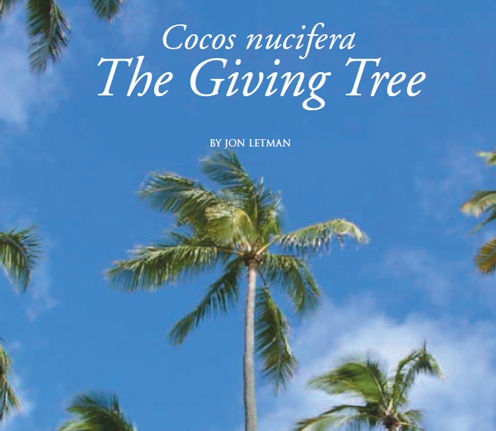Cocos nucifera The Giving Tree
By Jon Letman, Fall 2009 Edible Hawaiian Islands
 Let’s face it, some trees just give a little more.
Let’s face it, some trees just give a little more.
Surely, if there is one tree that embodies the best in a plant—strength, resilience, beauty, nutrition, flavor and utility—it is Cocos nucifera, the coconut palm.
“To Polynesians, coconuts are life,” says naturalist Angela K. Kepler. “For people who want to maintain spiritual ties with the ancient ones, using the varied products of coconut palms goes a long way toward tapping into old-time survival skills.”
From frond, husk and fiber to meat, water and shell, this aptly named “tree of life” provides a veritable shopping list of important staples far exceeding the usual food, shelter, tools and medicine.
Coconuts are used to appease the gods, launch ships, reduce stress, aid in digestion, make music and even halt hiccups.
As huge, buoyant seeds, coconuts spread on their own (though never as far as Hawai`i) and colonized much of the tropics in prehistory, obscuring their true origins, though most agree coconuts first grew somewhere between the Indian Ocean and Melanesia.
Polynesian legends speak of a male eel-god named Tuna who longs to be with a beautiful woman named Sina. The story varies, but always ends the same: Tuna is killed and as he lies dying he asks Sina to plant his head in the ground, promising that from it will grow a tree that provides for all. Thus, the first coconut palm sprouted.
